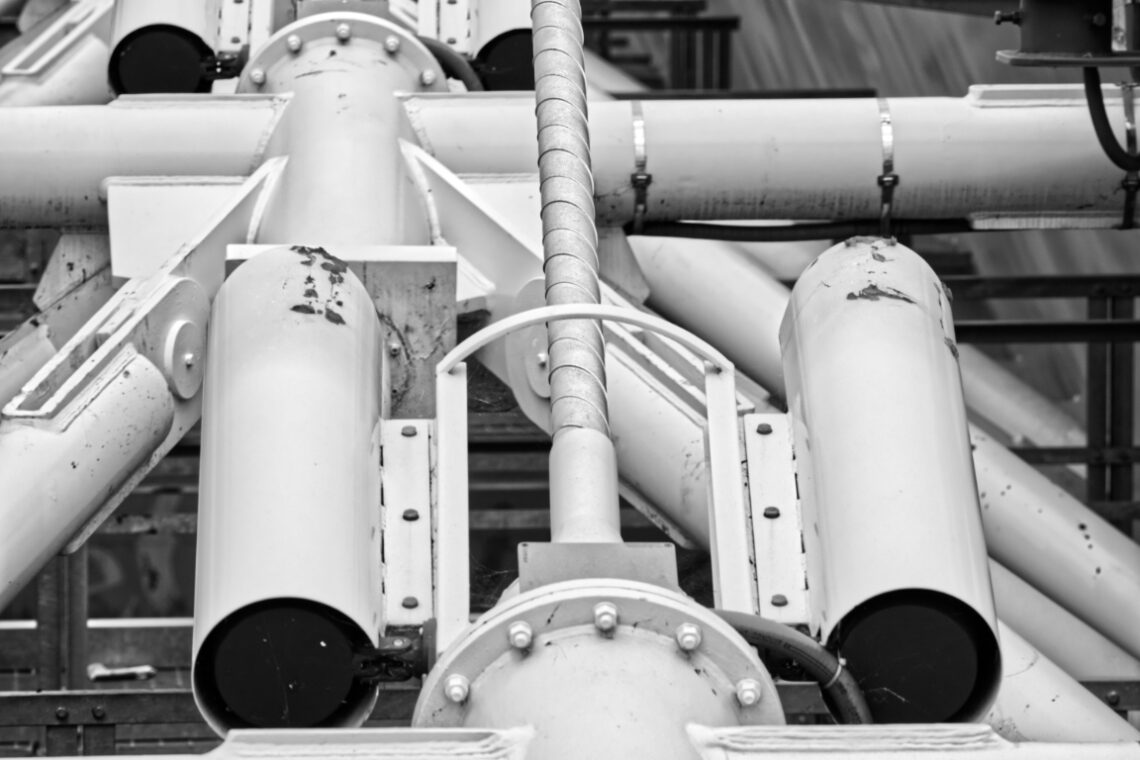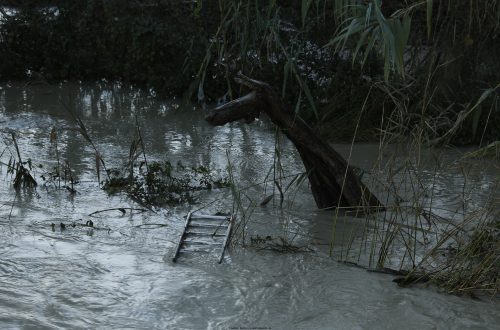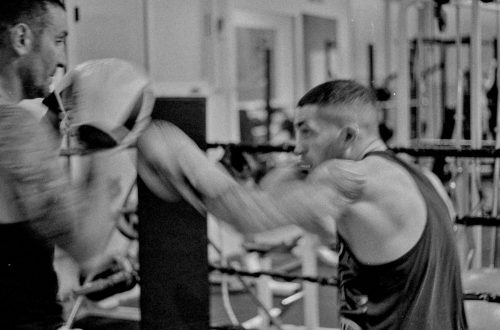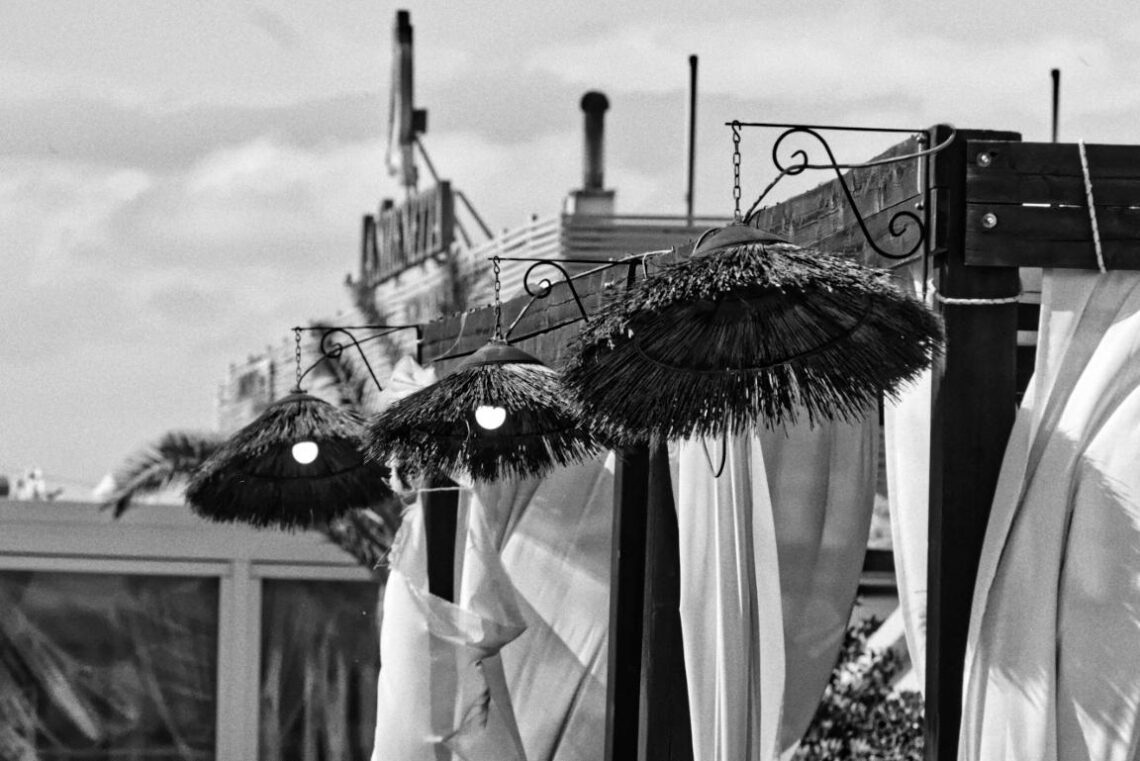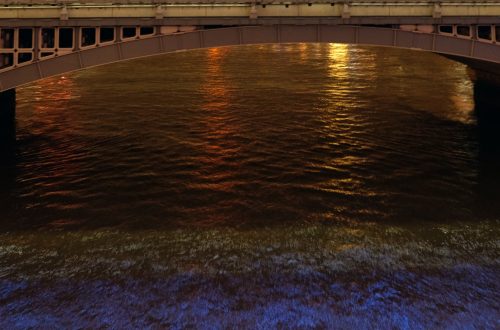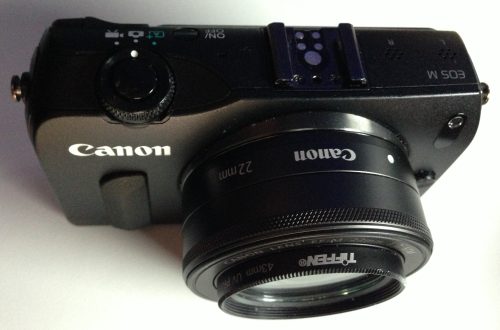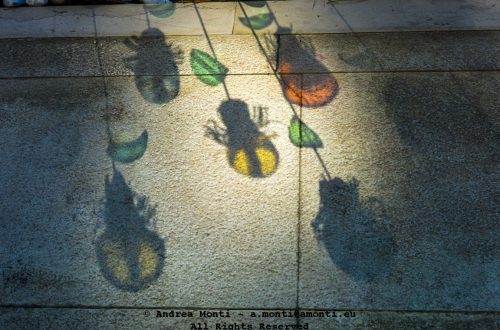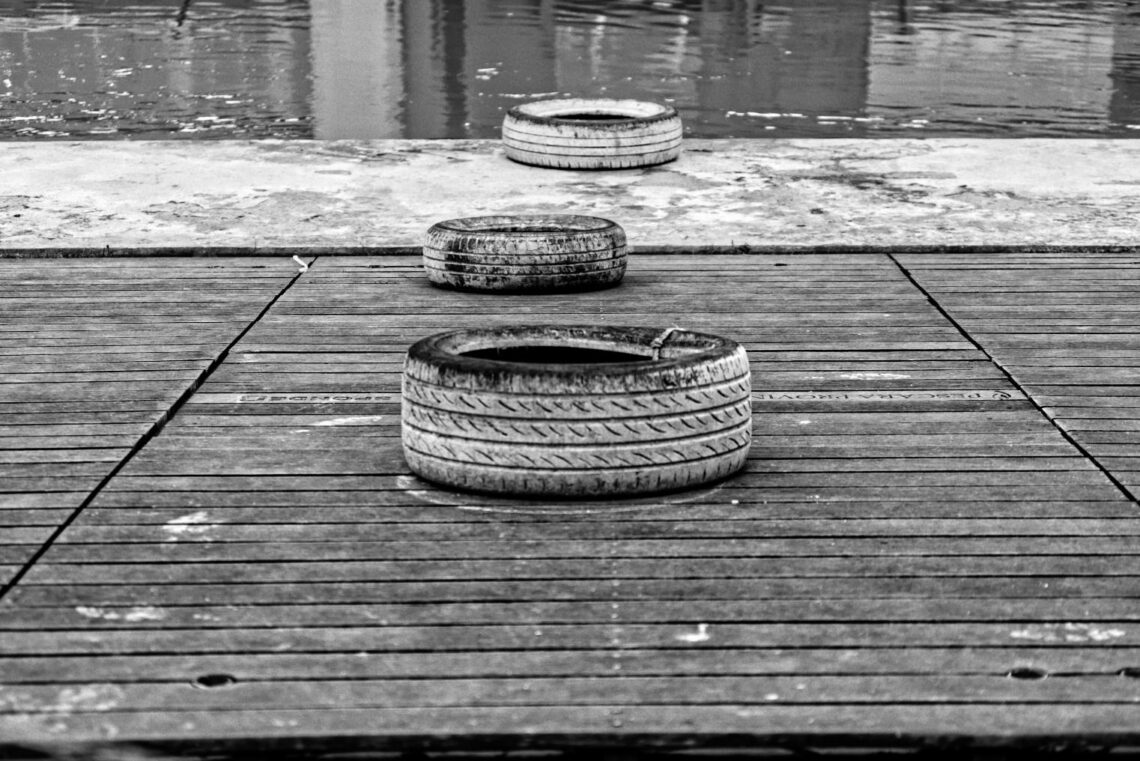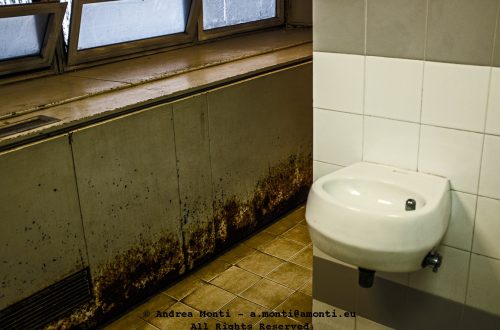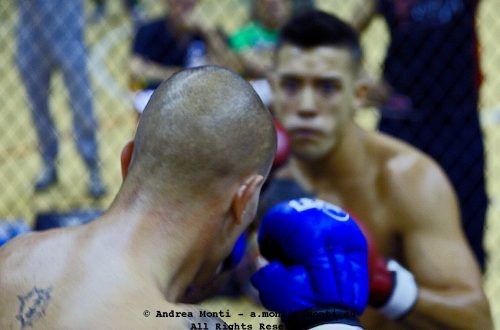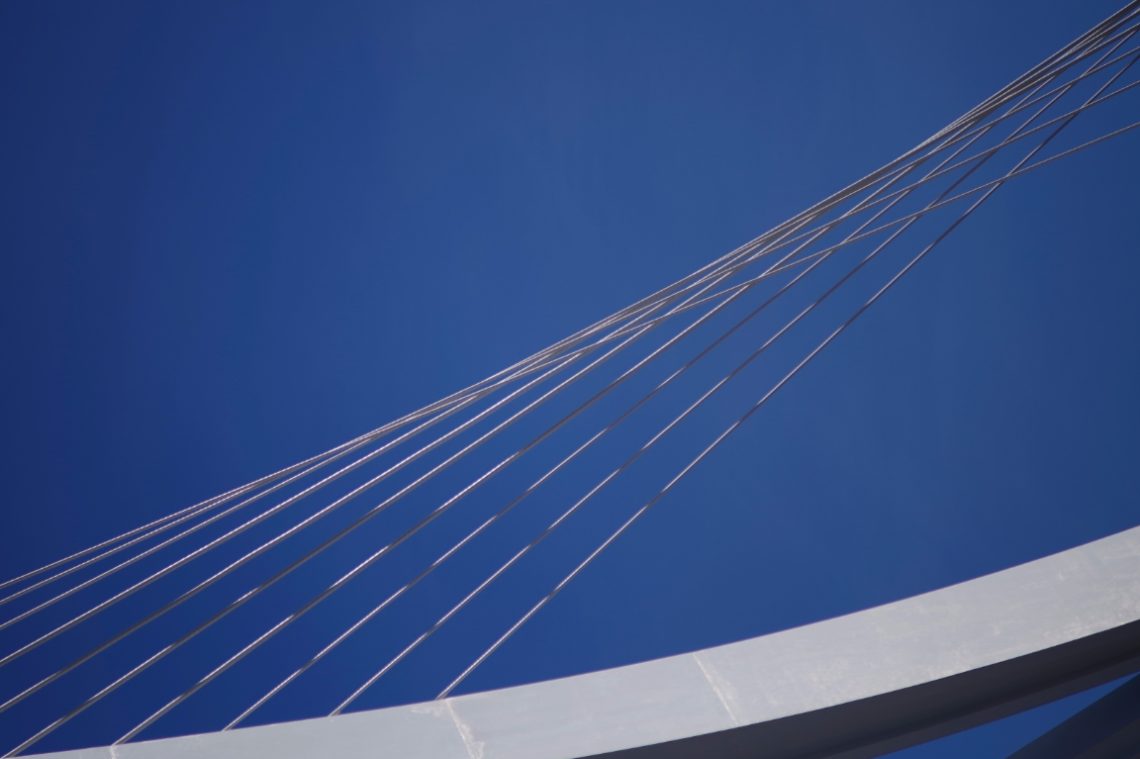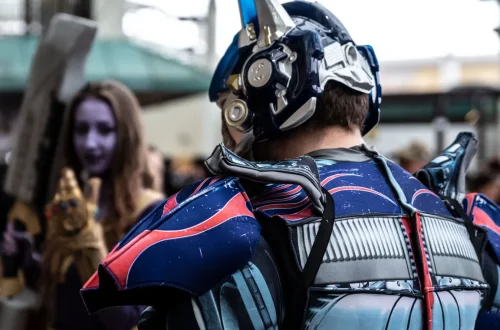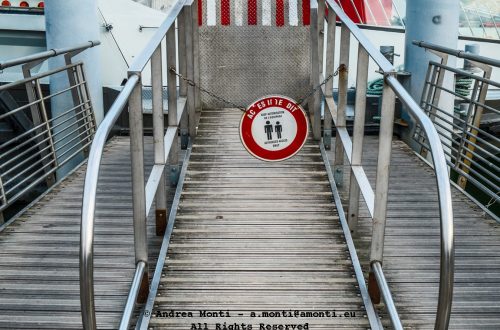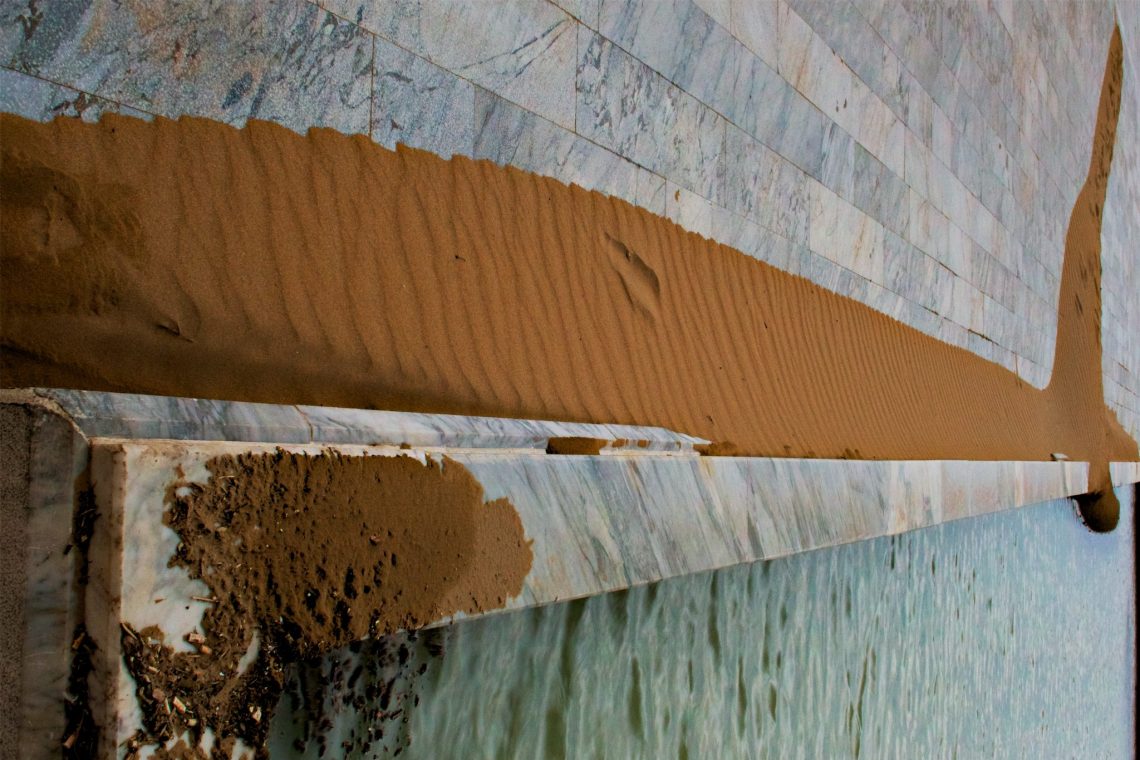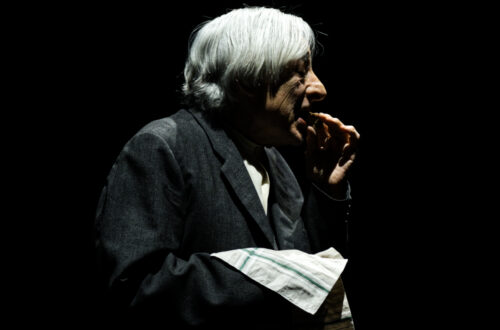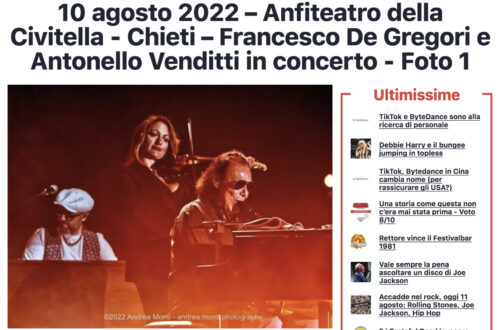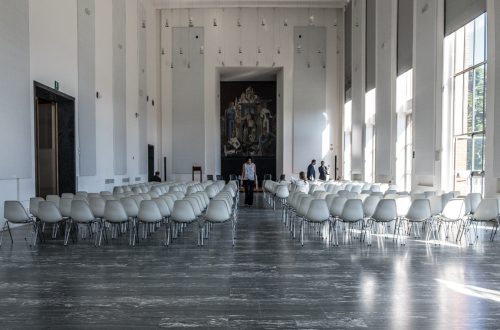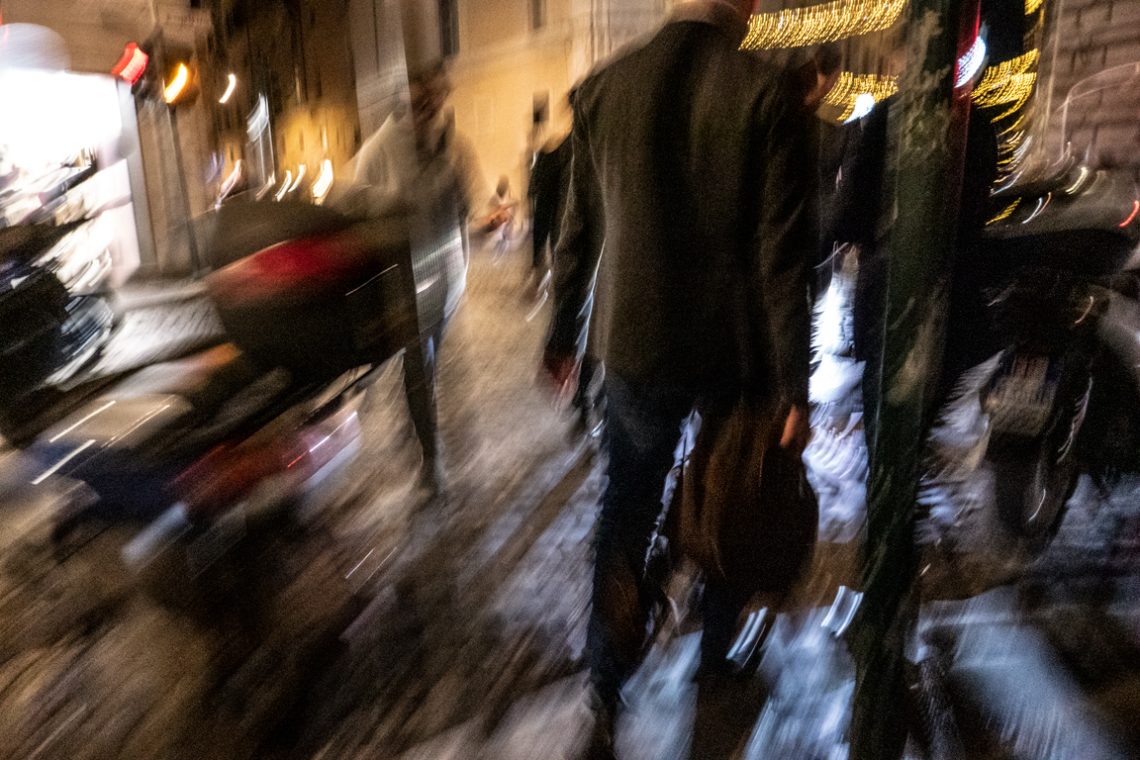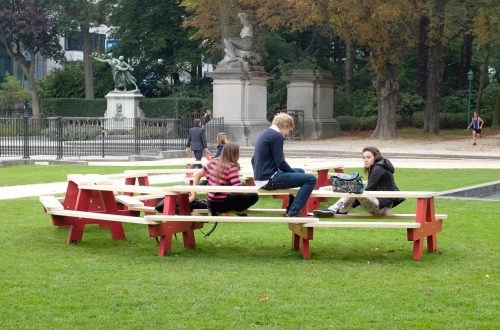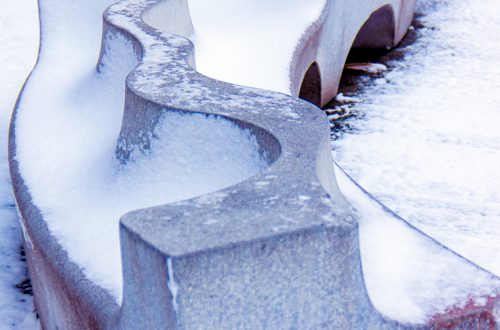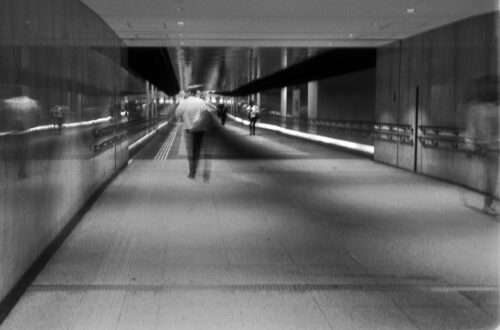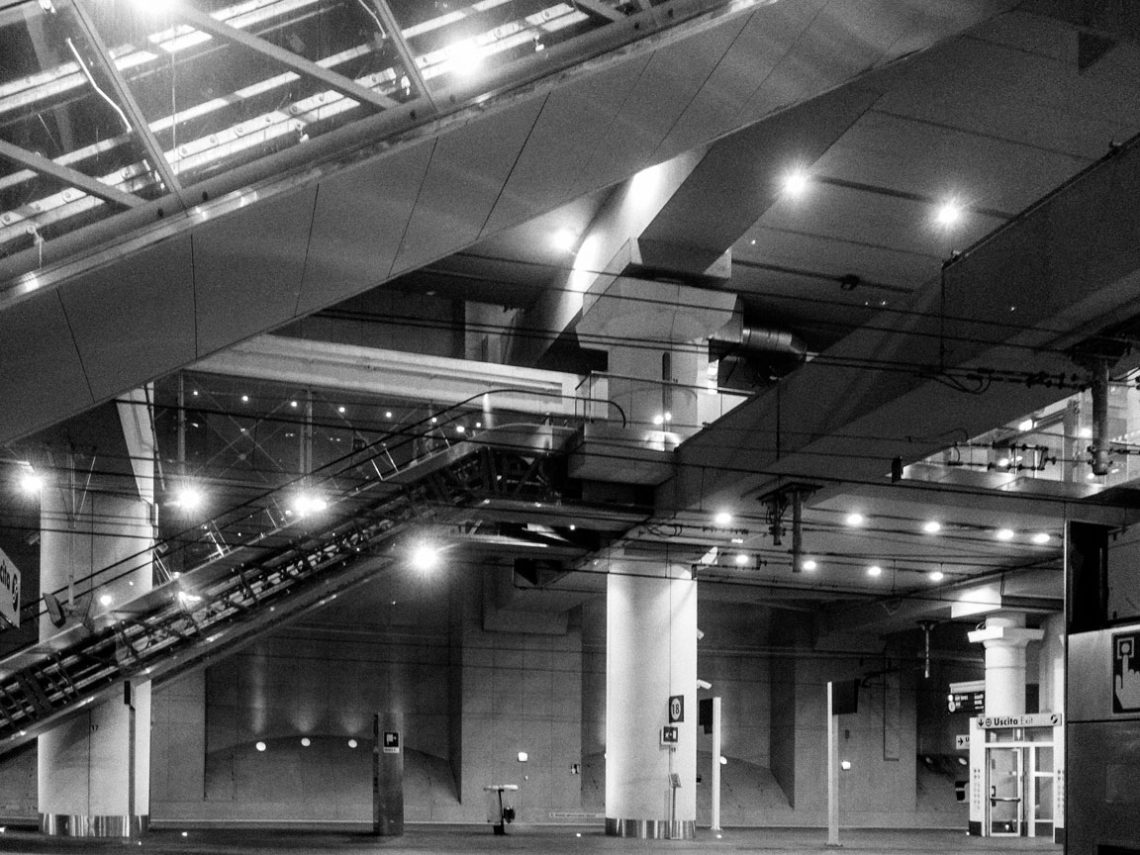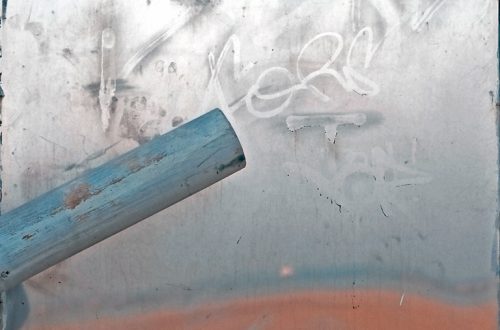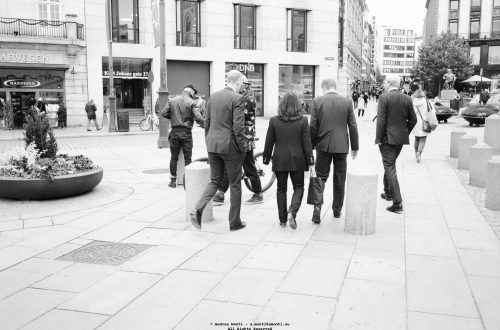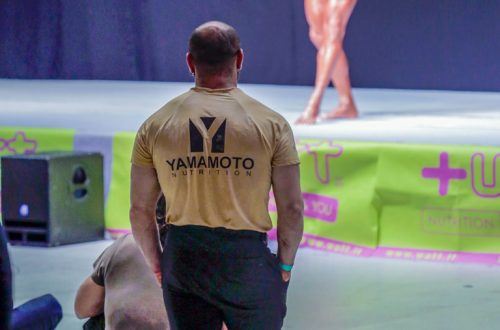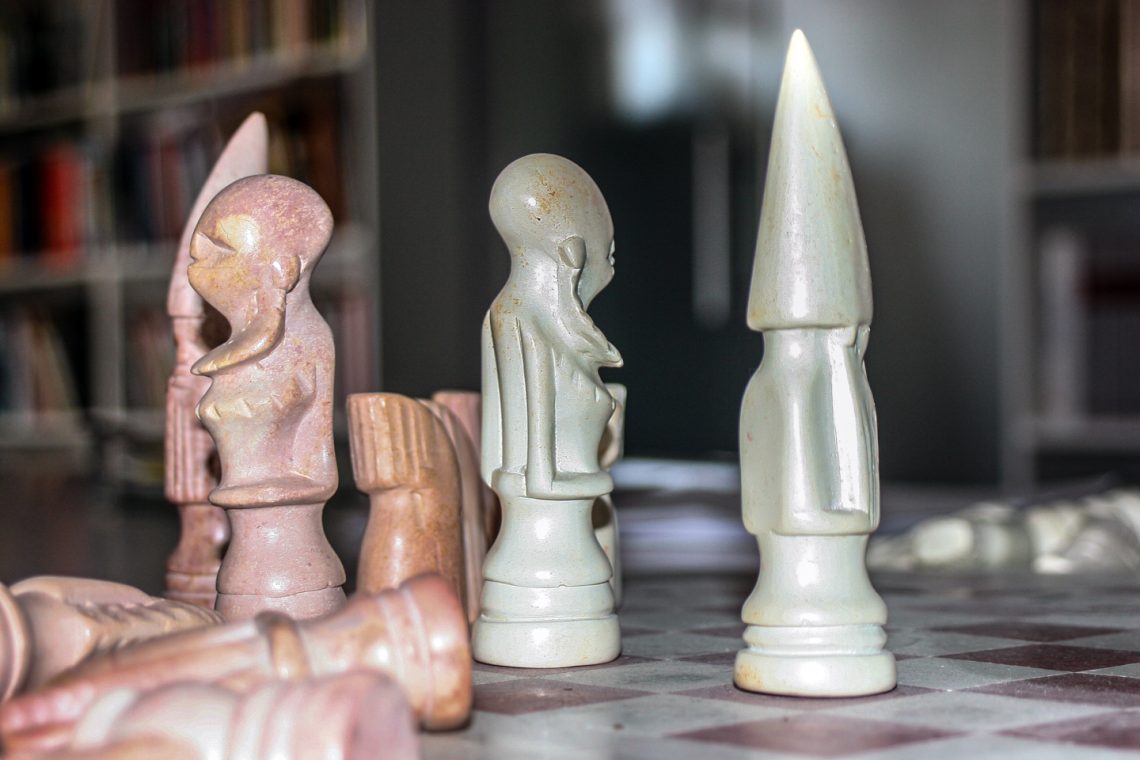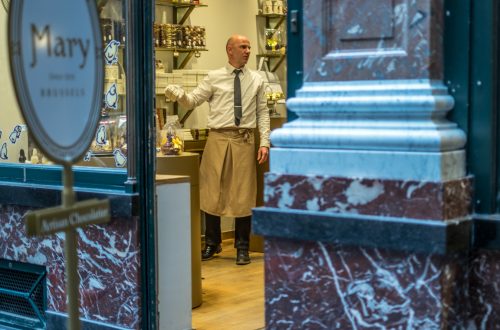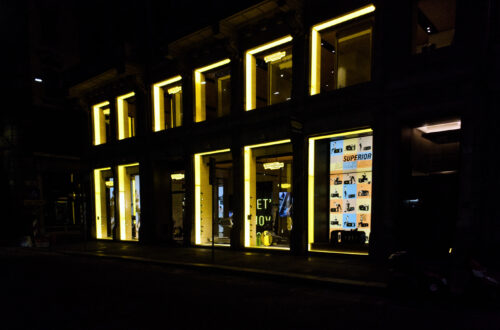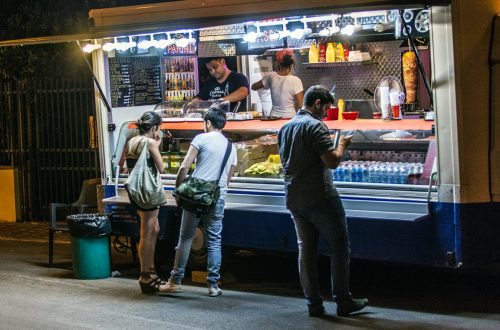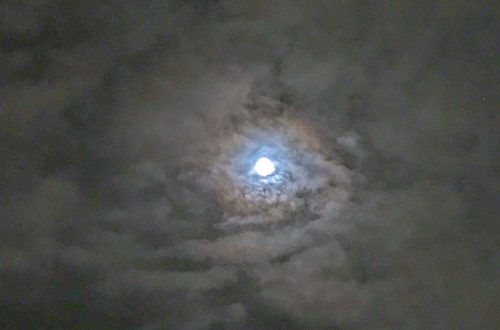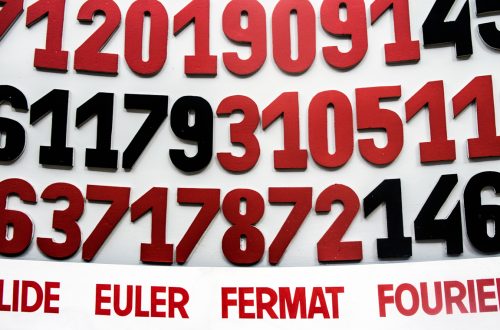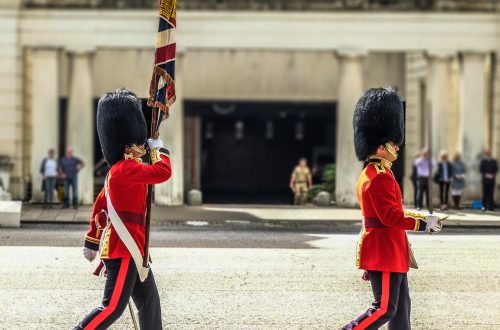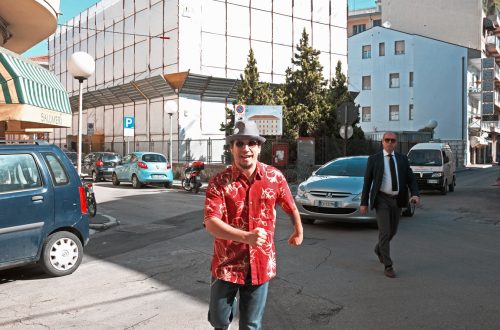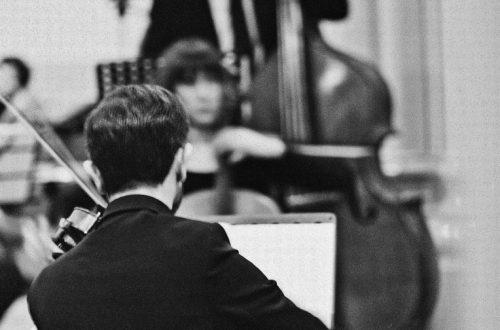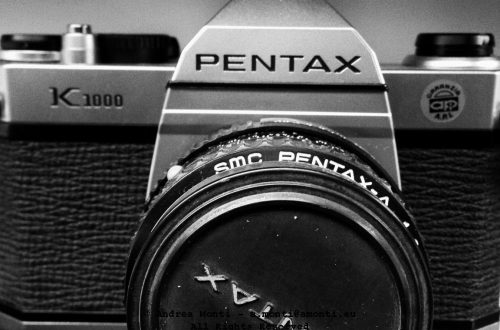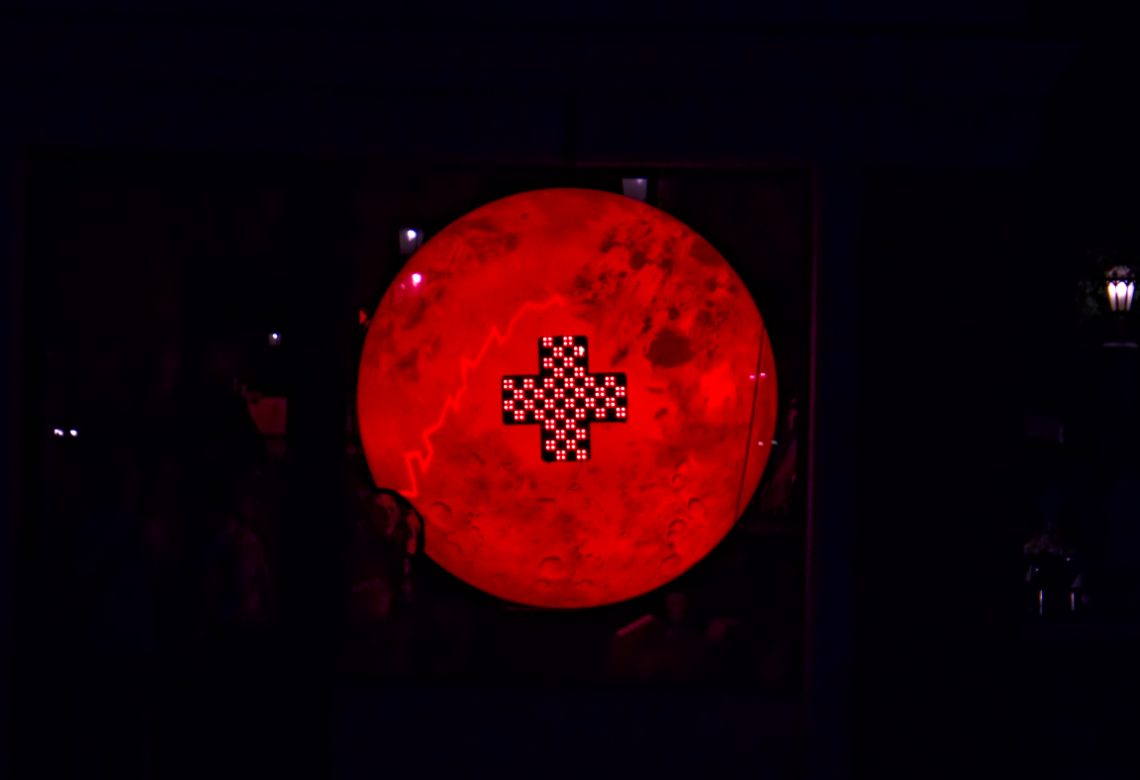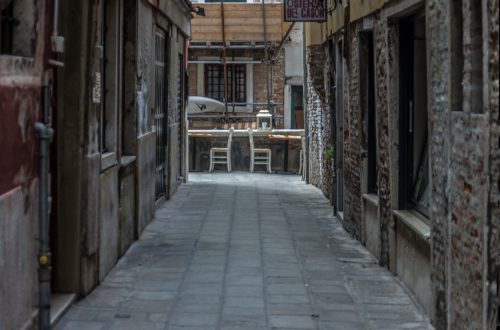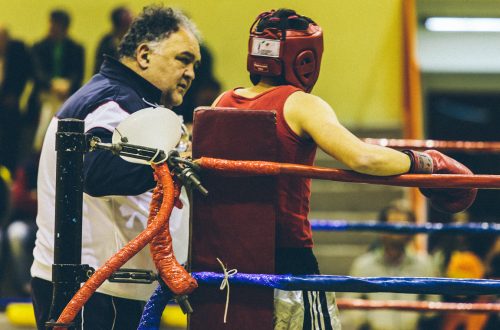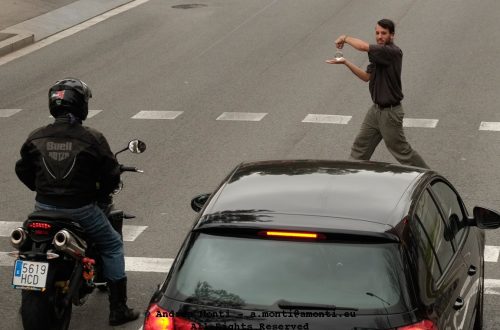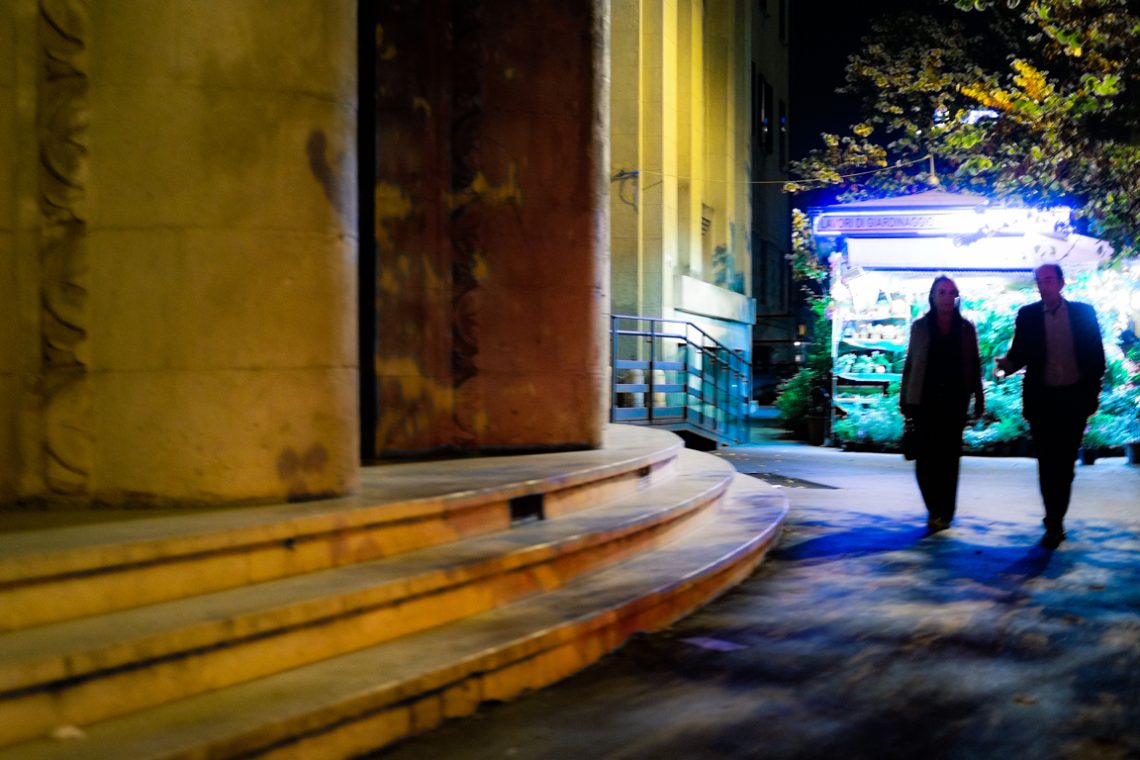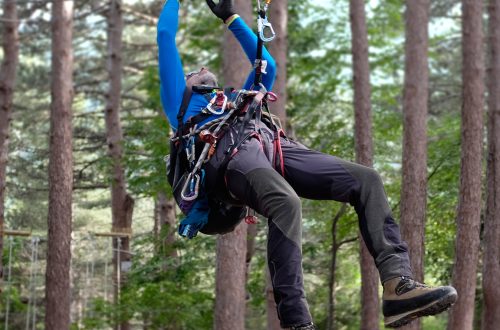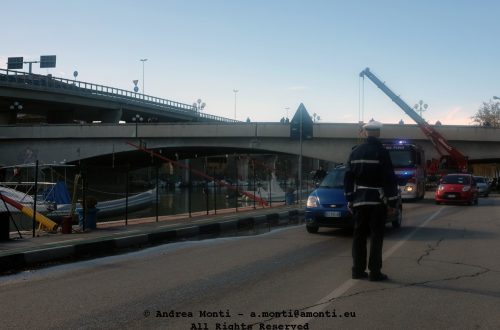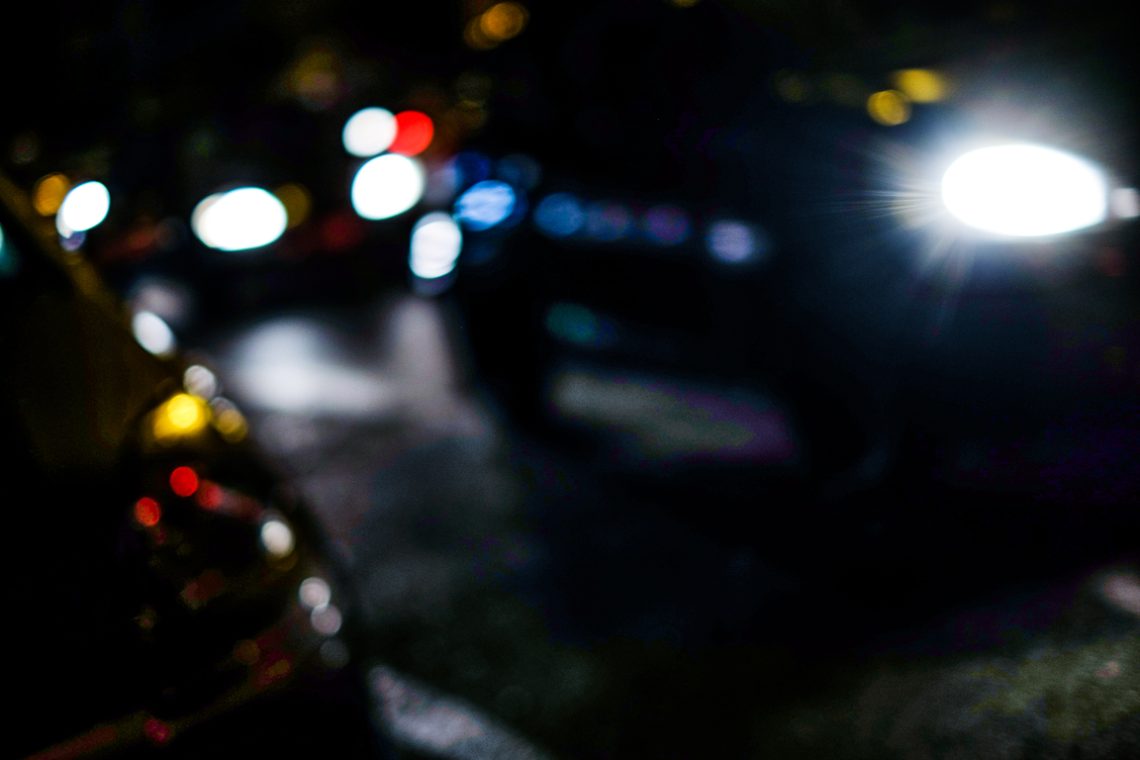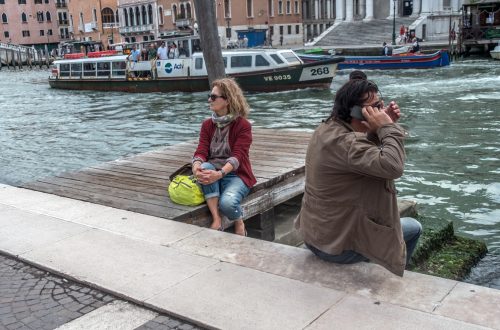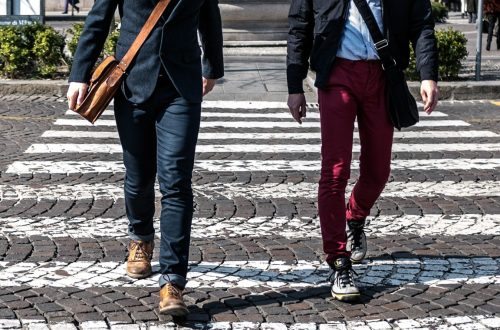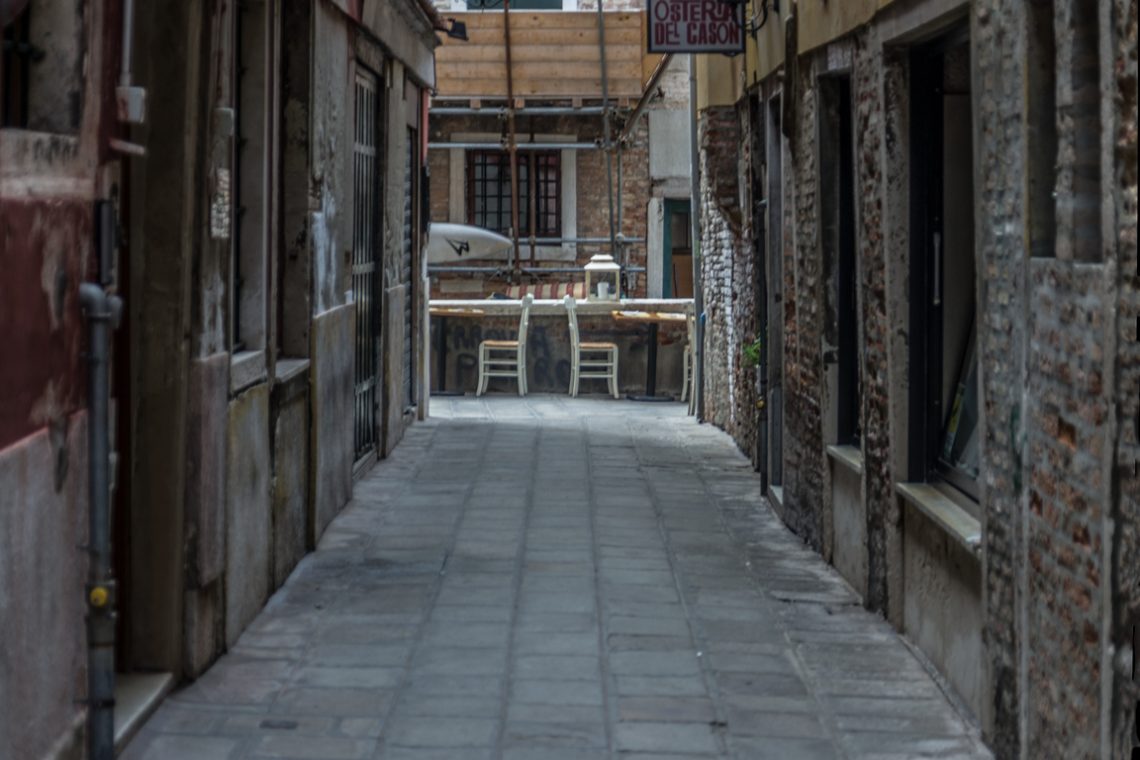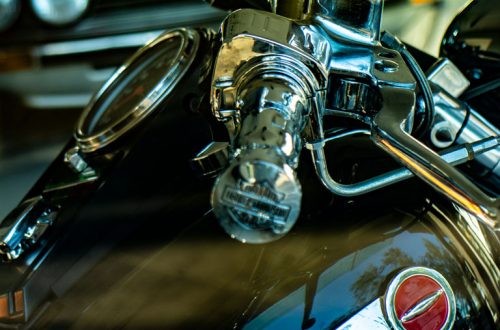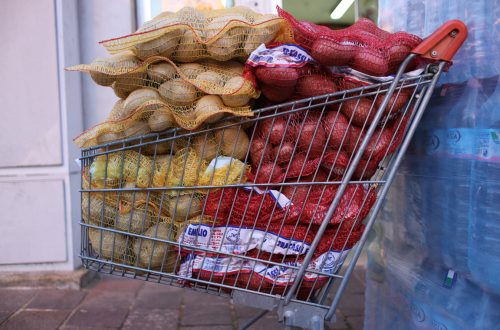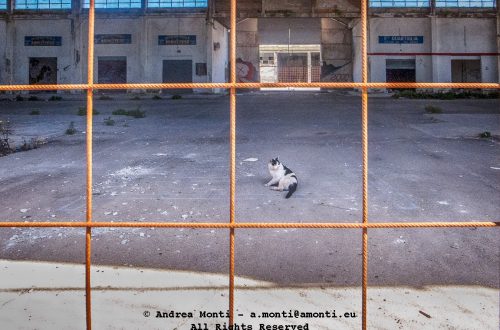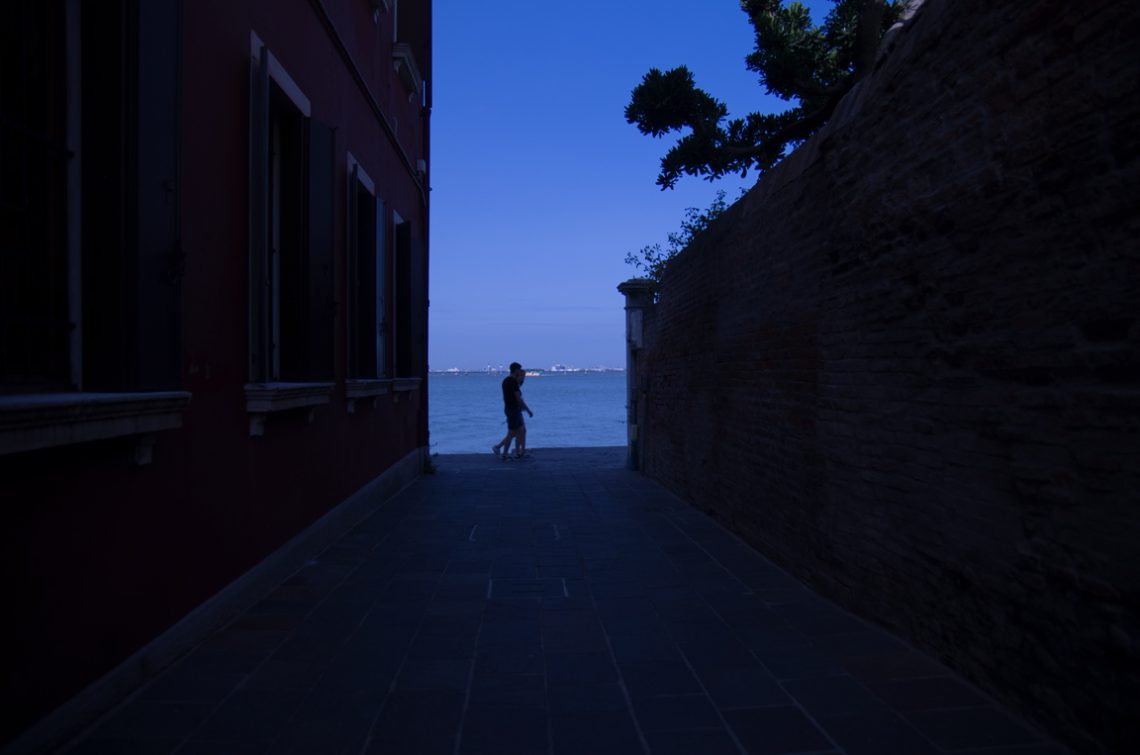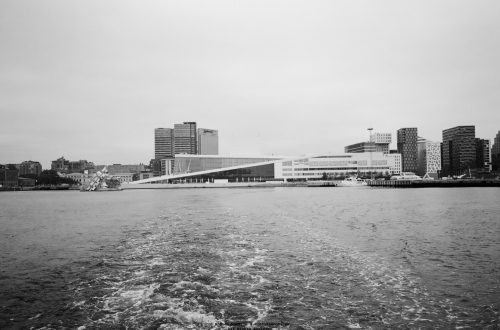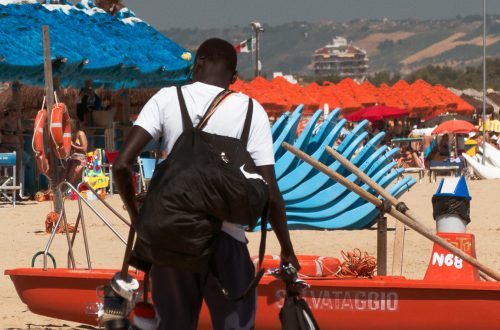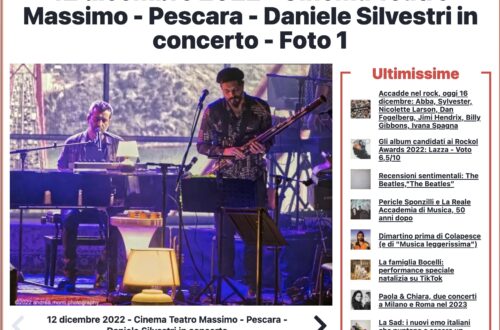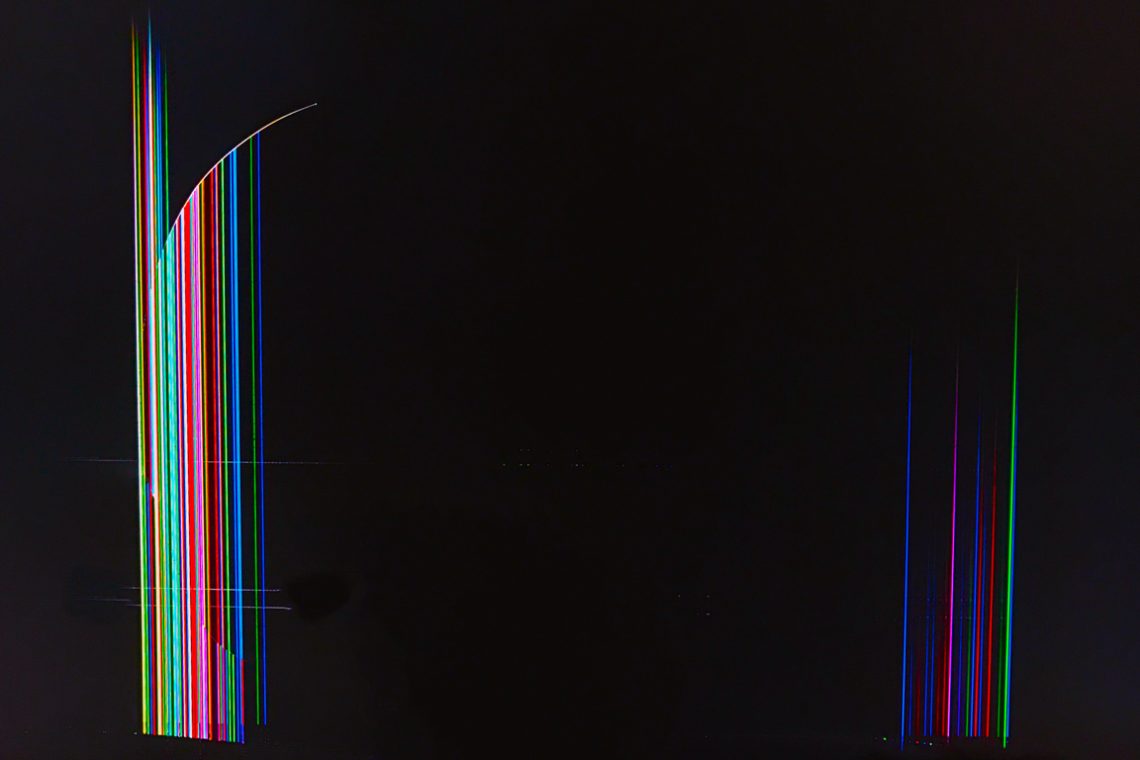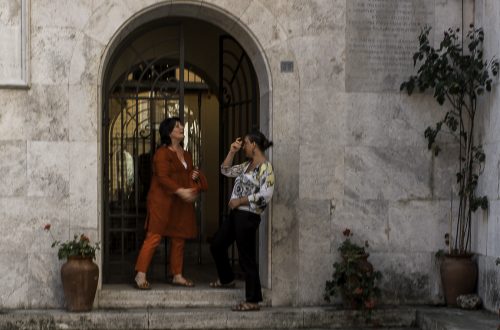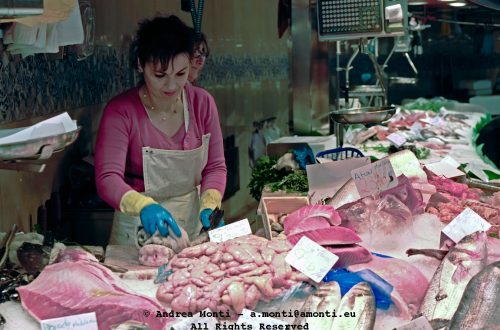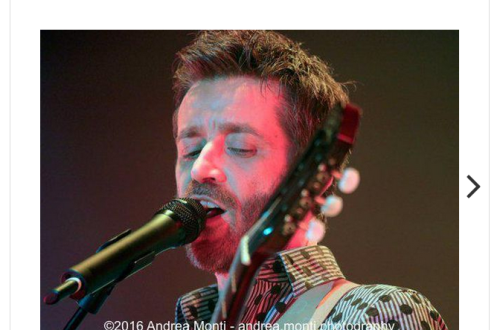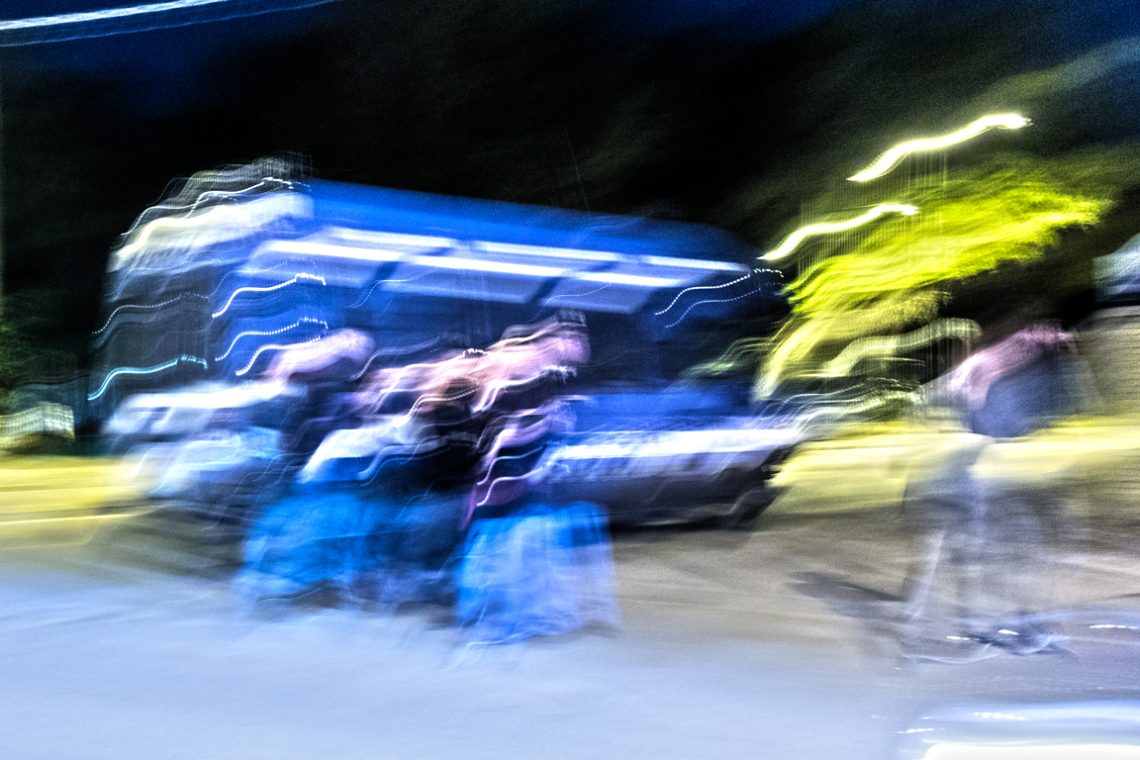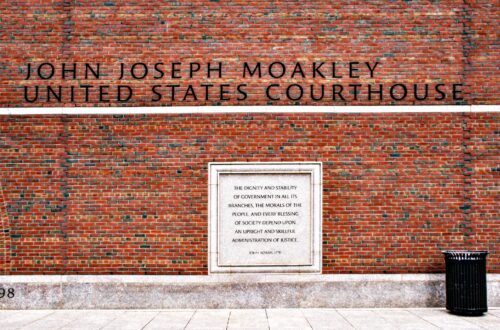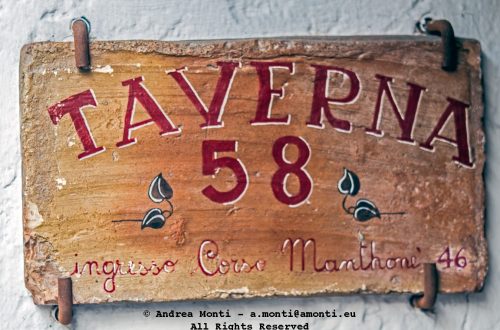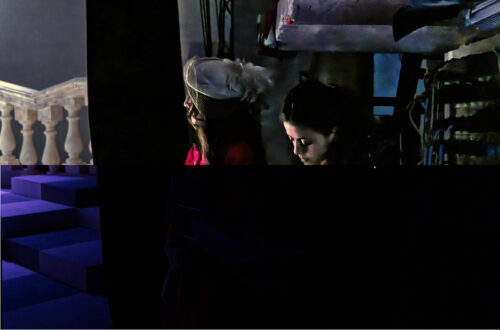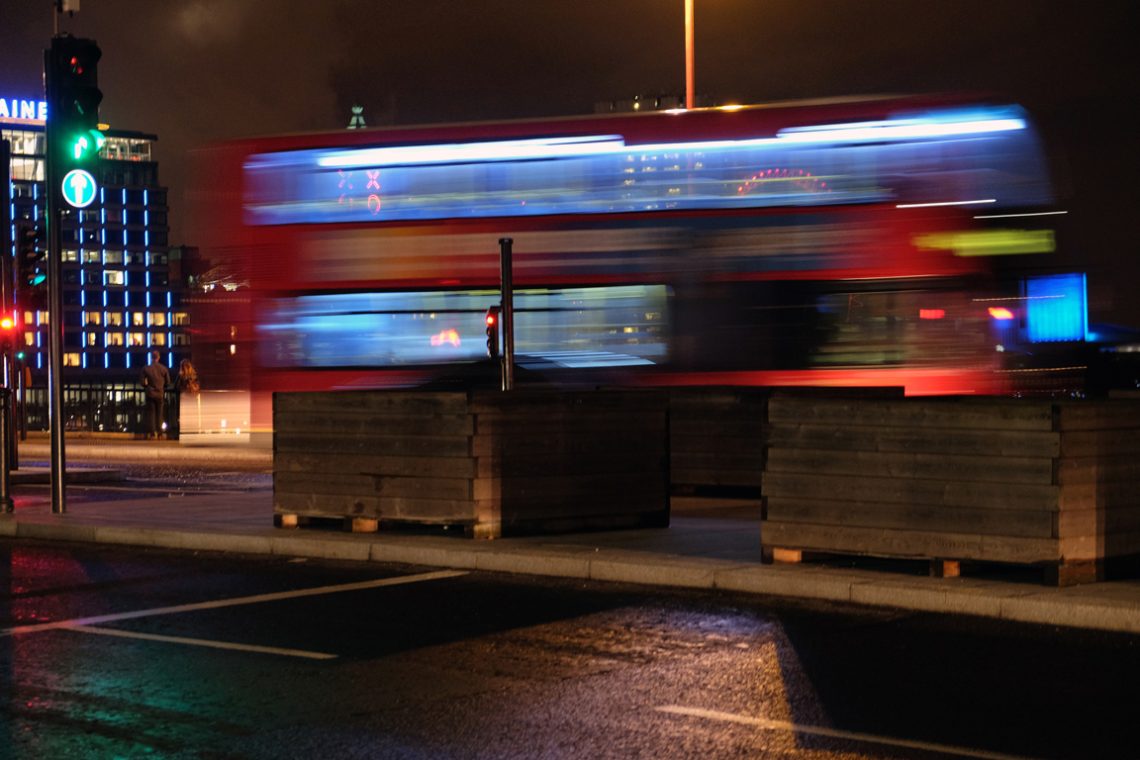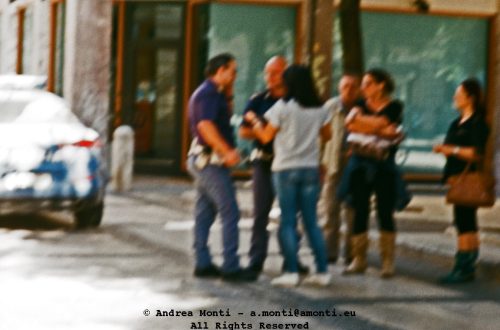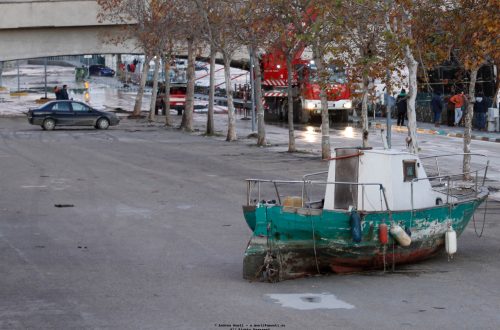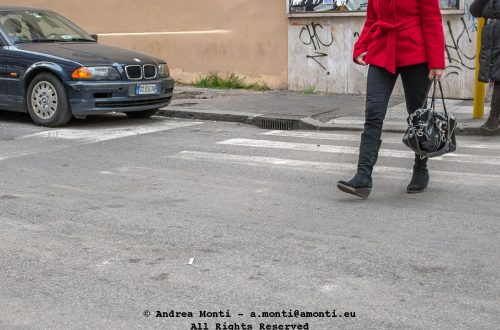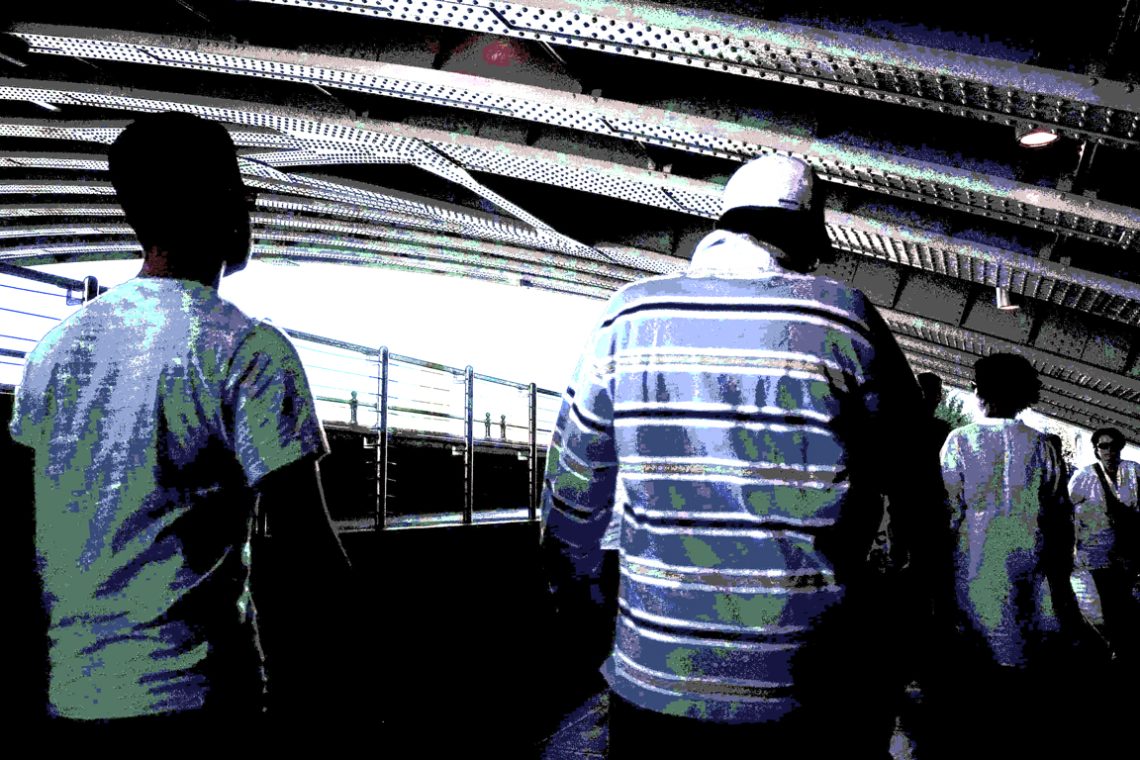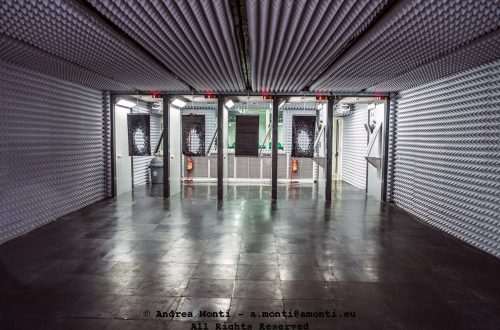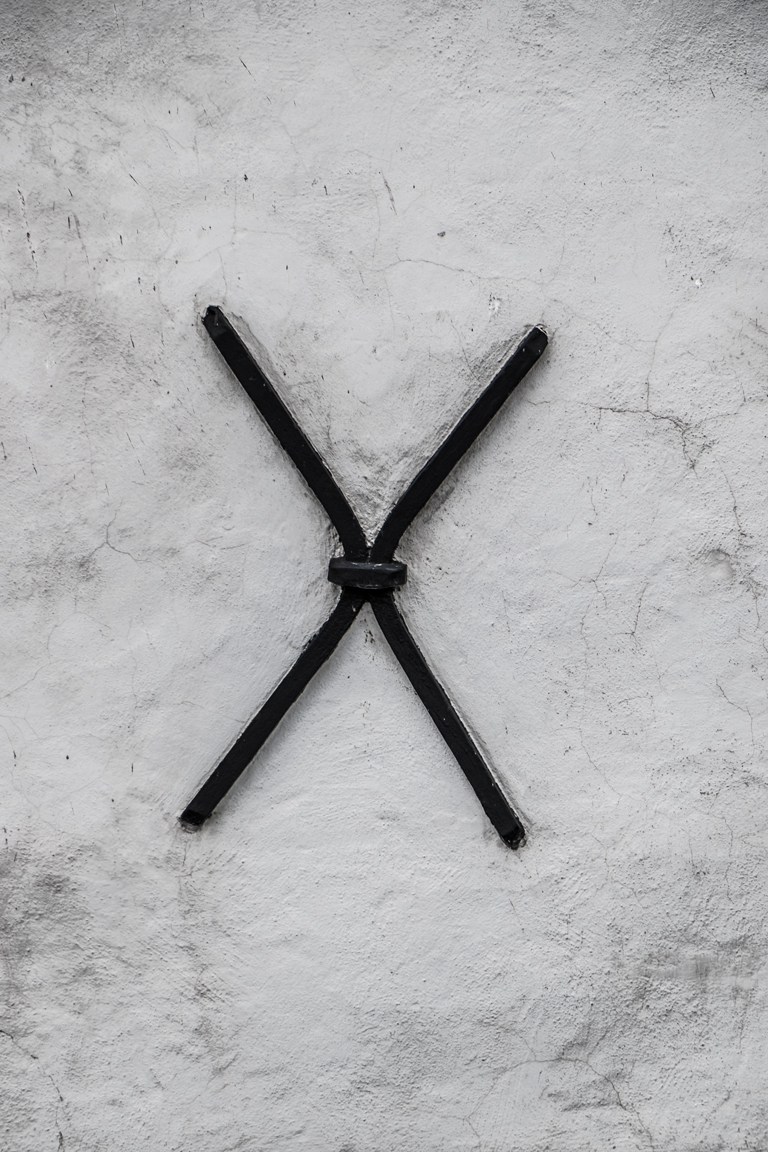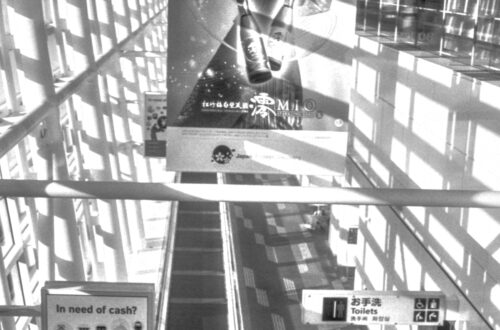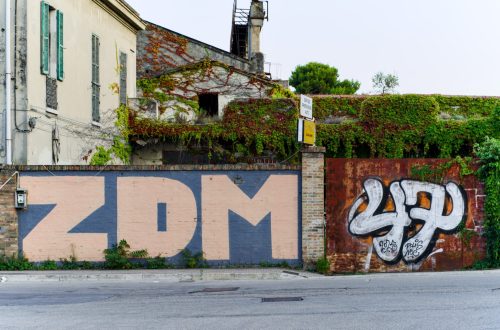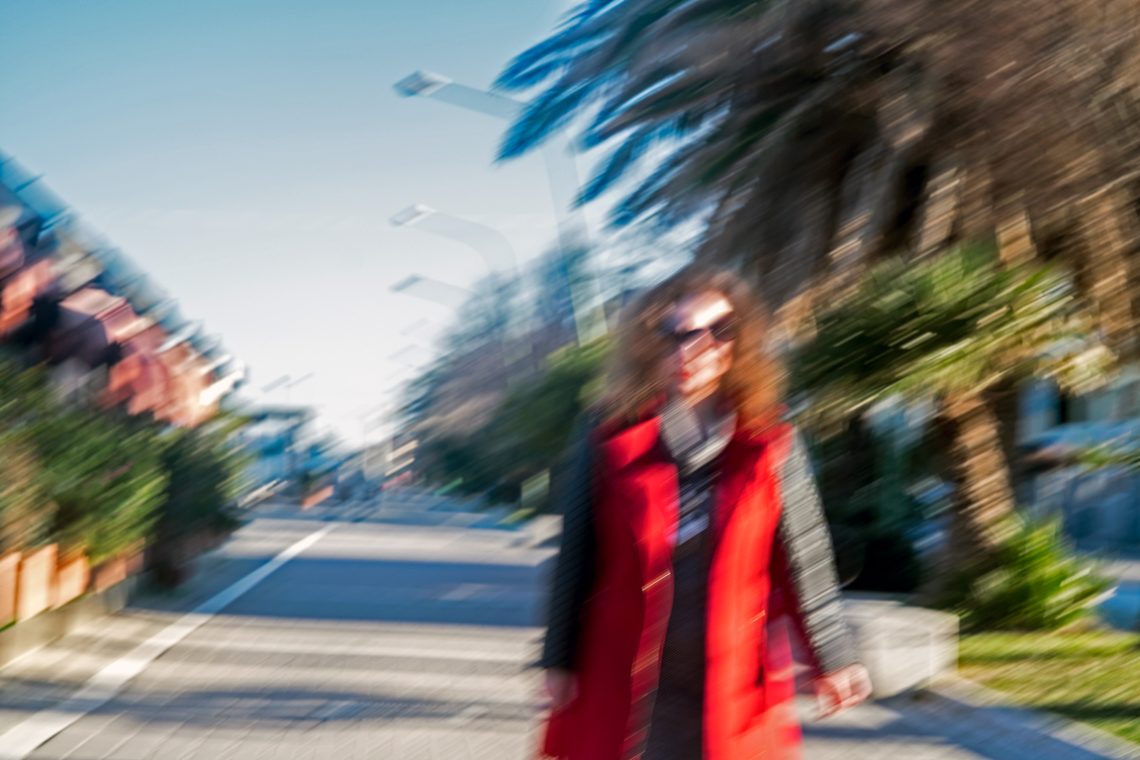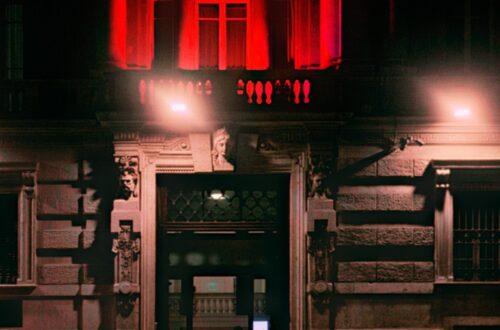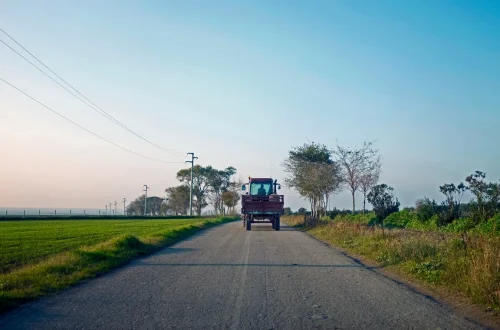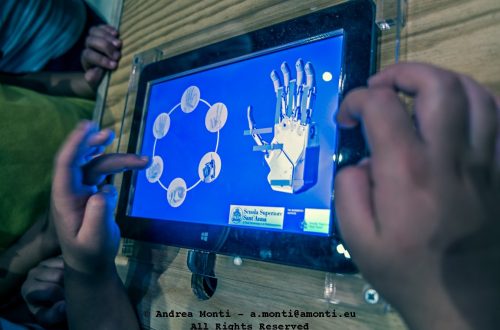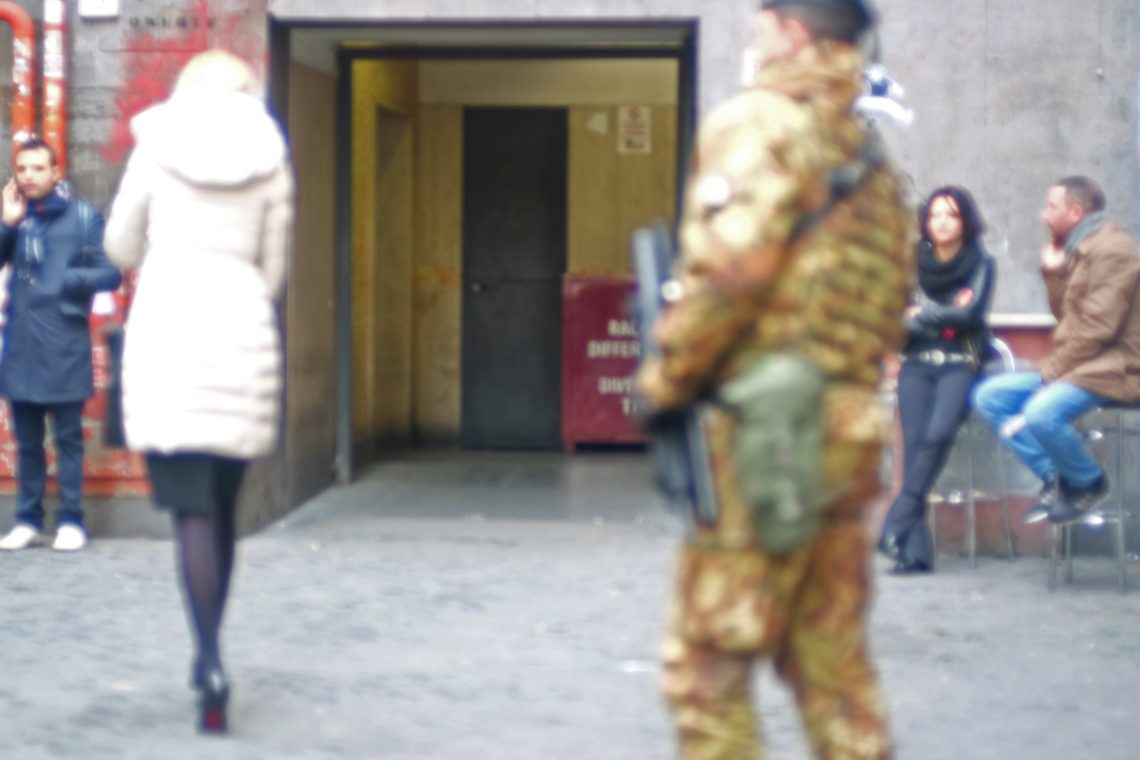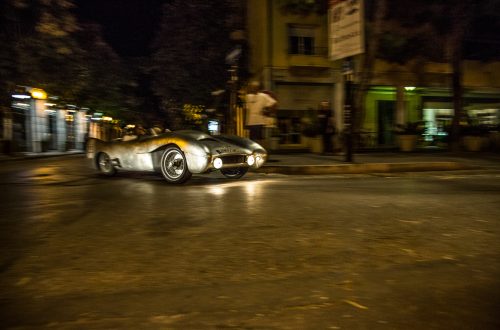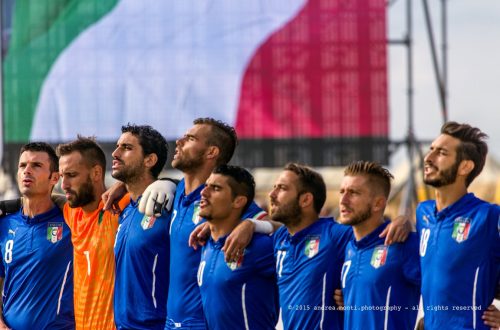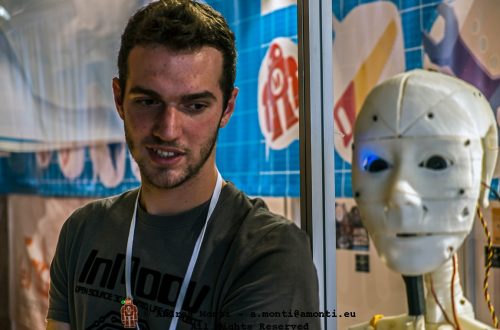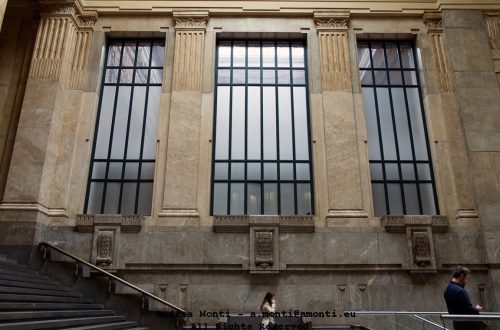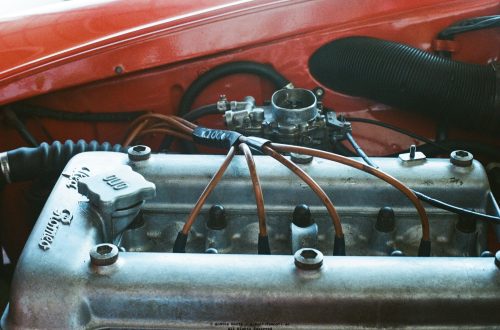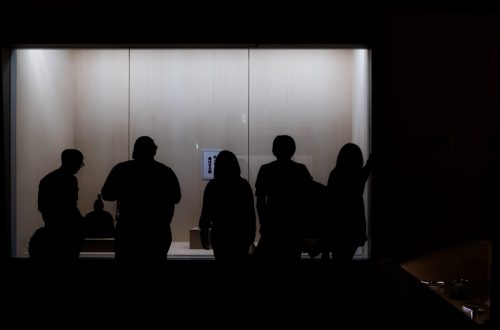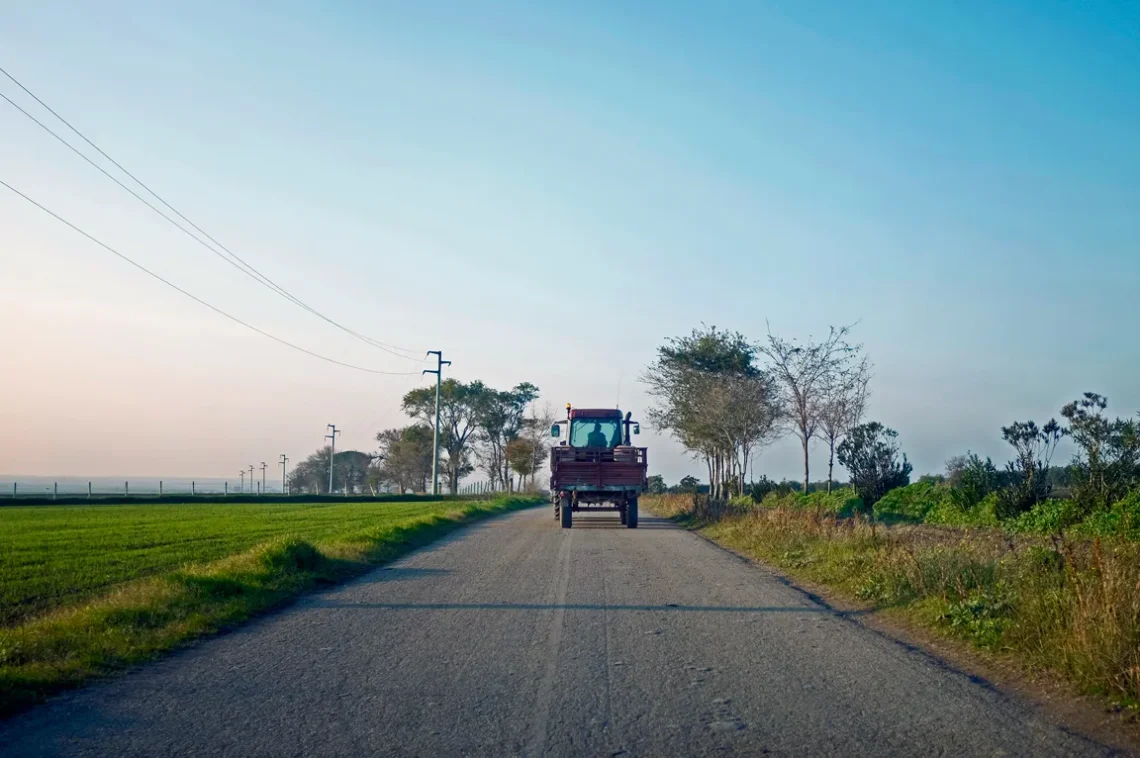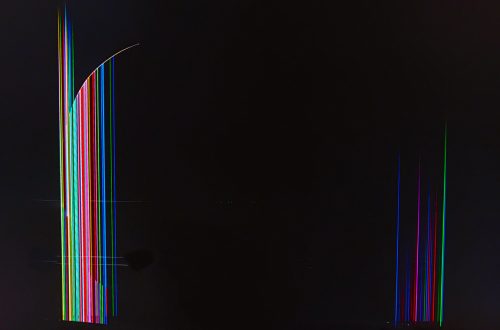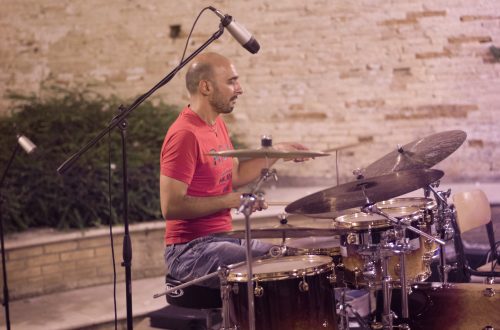-
Abstract
There’s a particular pleasure in encountering an image that resists immediate recognition. This photograph—an interplay of industrial forms, bolts, struts, and cylindrical elements—sits somewhere between documentation and abstraction. Strip away the context, and it becomes less about what these structures are and more about what they do visually: dividing the frame, catching light, and setting up a rhythm of repetition and interruption. The composition is rigidly symmetrical along the vertical axis, yet it doesn’t feel overly formal or sterile. The imperfections—paint chipping, scuffs, a touch of grime—are what give it character. These blemishes remind us this isn’t a CAD rendering but a real, weathered object, doing its job in the…
-
Three Lamps
I made this photograph on a breezy afternoon, when the light fell just right across the row of straw-shaded lamps. The alignment was irresistible — three distinct forms in sequence, receding gently into the frame. I wanted the rhythm to pull the viewer’s eye through the image, from the sharp texture of the foreground shade to the softly blurred suggestion of the background structure. The Pentax K-3 II paired with the DA* 50-135 rendered the detail crisply; every strand of straw stands out against the muted backdrop. The lens’s rendering at f/2.8 helped create a shallow depth of field without obliterating context. The light bulbs, faintly glowing even in daylight,…
-
Three Tires
-
A Mesh
-
An Essay on Composition
This photograph began with geometry, but it ended up being about contradiction. Sand, marble, sea—each a distinct texture, each performing under different rules. It’s not a landscape and it’s not abstract, but it borrows from both. The diagonal lines, the flattened depth, the conflict between order and erosion—all deliberate, but not staged. I rotated the frame on purpose. The eye expects a horizon, some gravitational anchor, but here that’s denied. The marble slabs—cold, precise, quarried and arranged—seem to float or fall, depending on how you orient yourself. The band of sand running diagonally across the frame interrupts their perfection with a tactile, natural disorder: dunes formed by wind, not by…
-
Photopanning in Rome
Photo panning is an art in itself and – when adequately practised – is able to deliver a stunning visual experience. In this picture (that has not been altered but for contrast and clarity) the overall experience reminds the Impressionism aesthetics.
-
A view of the Bologna’s Station
-
Close up of an Ethnic Chessboard
Photographing chess pieces is a common cliché, yet this set refused to be generic. Sculpted with raw, almost brutalist character, these figures aren’t crafted for elegance—they’re carved for presence. The asymmetries, the subtle flaws in the stone, and the ambiguous expressions on the pieces imbue the scene with tension. One might call them grotesque, but I prefer “unapologetically tactile.” I chose a narrow depth of field, letting only a sliver of the board fall into focus. It wasn’t just an aesthetic decision. With these pieces, clarity carries weight; it turns the observer into a participant. The fallen pieces strewn at the bottom edge complete the silent narrative of strategy and…
-
Pop Art Meets Industrial Hamburg
I shot this industrial skyline in Hamburg, initially as a stark monochrome—smoke billowing against a winter sun, the city bathed in a haze of latent threat. But the image called for more. So I bent it, digitally, into a quartet: one frame fractured into four, each processed through a brutalist lens of colour theory—red, green, cyan, monochrome. A nod to Warhol, sure. But also to those old weather warnings on analogue TVs, when the signal bent reality and your retina paid the price. Technically, the base image holds. The stack of buildings anchors the composition in rigid geometry—angular, postmodern, the kind of skyline that doesn’t beg for admiration but demands…
-
Not A Rorschach Inkblot
-
Red Cross
Some photographs are taken instinctively, almost without the usual premeditation that guides my framing. This one emerged from a walk at night, when the glow of an illuminated red circle caught my eye—a signal cutting through the darkness. At its centre, a cross of tiny LEDs blinked rhythmically, part medical icon, part abstract light sculpture. Framing it was straightforward: the dark surroundings worked like a natural vignette, pushing the viewer’s gaze towards the centre. I positioned myself to keep the circle symmetrical within the frame, knowing that the composition’s strength would lie in its stark simplicity. Technically, this was a delicate balance. Shooting at night with such a bright light…
-
An Essay on Light
-
An Essay in Composition
I made this image out of defiance. The street was a mess of cars, headlights flaring, bodies moving — and instead of chasing sharpness or narrative, I stripped it down to pure visual rhythm. Defocused on purpose. Not by mistake, not due to speed, but as a choice to let form take over function. What remains is balance. The white beam on the right anchors the frame, violent in intensity, flaring just enough to fracture the blacks. On the left, the warmer tones — yellows, reds, soft reflections in polished metal — counterbalance with weight and curve. The centre dissolves into suggestion. Light, motion, nothing literal. The street disappears. Technically,…
-
Seats
-
Natural Silohuette
-
Spectrum
A broken LCD panel, screen blacked out except for vertical bands of coloured light, frozen mid-collapse. I framed the shot in total darkness, using a tripod, low ISO, and long exposure to extract every nuance of the emitted RGB shards. The left stack is dominant—dense, pulsing, lines tightly packed, terminating in a soft arc of failure. The right set echoes it with less mass, more space between columns. Between them, void. The black isn’t absence—it’s the backdrop of digital death. This isn’t a glitch aesthetic. It’s material damage, turned into colour structure. Technically, I shot at ISO 100, f/5.6, 2.5 seconds. Manual focus. White balance locked to daylight to prevent…
-
Panning the Police
This frame it’s a reaction. A physical jolt to flashing blue, shouting, bodies in motion. I panned the camera instinctively, not to follow a subject, but to share the sensory overload of the moment. The result? A hallucination. A retinal echo of tension. Shot handheld at night, 1/2s exposure, ISO pushed to 3200. The blur is total—no anchor point, no sharp subject. Lines of neon bleed into the dark, and even the static elements—trees, pavement, the van—become fluid. That’s the point. This isn’t about precision; it’s about disruption. I framed with the van off-centre, allowing room for the bodies in blue and those not in uniform. Movement traces direction. We…
-
London in Motion: A Night Ride in a Single Frame
A red double-decker bus slices through the night, leaving only its luminous ghost behind. In this fleeting moment, captured on a wet London street, the city reveals its rhythm—not through its buildings or its people, but through its constant movement. The bus doesn’t pause to announce itself. Its iconic shape is blurred into streaks of red and blue light, a reminder that in this city, life is always in transit. The wet pavement catches the glow of streetlamps and traffic signals, spreading the colours like brushstrokes across black asphalt. Even the green arrow on the traffic light seems to point the way forward, as if urging the scene along. Behind…
-
The Day of the Zombies
-
Even
-
Accidental Precision
This wasn’t a technical success. It was a mistake. I had just raised the camera when I accidentally twisted the zoom ring mid-exposure. The result: a vortex of distortion with a woman at the centre, walking straight into it. And yet, it worked. Not in spite of the blur—but because of it. The composition wasn’t planned, but it landed with an unexpected balance. The vanishing point draws backward, while the red coat blasts forward—like pigment dragged across the frame by a restless brush. The background—palm trees, streetlights, suburban geometry—melts into curves, turning realism into gesture. This image violates every rule of clarity. It’s not sharp. Her face is unreadable,…
-
Multiple Peripheral Visions
This frame was shot instinctively—no time to refocus, no second attempt. What emerged is less a photograph than a study in misdirection. Every figure in this image is out of focus, yet the meaning is sharper than most high-resolution portraits. The scene plays like theatre. A soldier, heavily armed, stands at ease in the foreground. A woman in heels walks away, blurred into silhouette. In the background, people sit, smoke, talk, check phones. The corridor and its black door—dead centre, unnerving in its neutrality—stares back like a question. The sign reads “BALCONE DIPLOMATICO,” almost comical in its contrast to the ordinariness of what surrounds it. Technically, it’s a failure by…
-
Without Glasses @ via del Corso
I made this photograph in Rome on a wet afternoon, deliberately throwing the focus to the foreground while the main figures walked straight into softness. It’s not a mistake. It’s an exercise in perceptual ambiguity—what the world looks like when memory is sharper than vision, when emotion fills in the blanks that optics don’t. The Fujifilm X100s, with its fixed 23mm f/2 lens, let me shoot discreetly. I prefocused on the pavement, framed instinctively, and let the rest blur into suggestion. The couple—arms linked, shopping bags swinging, half-sheltered under an umbrella—aren’t anonymous; they’re imagined. Their presence is read through posture, not detail. Technically, it’s anti-precision. Depth of field was shallow,…
-
Lost in Le Puglie
There are roads in Puglia that don’t go anywhere fast. This was one of them. Shot from behind the wheel, somewhere between nowhere and nowhere else, I caught this image of a slow-moving tractor framed by empty fields and a sky too wide to hold. The road is narrow, uneven, old—but it doesn’t complain. Like most things around here, it does its job without fuss. The light was gentle, just after afternoon, slipping into that moment where colour fades softly rather than drops off. The greens were still sharp, the sky leaning pale toward evening, and everything felt settled. No drama. No rush. What drew me in wasn’t the tractor…
